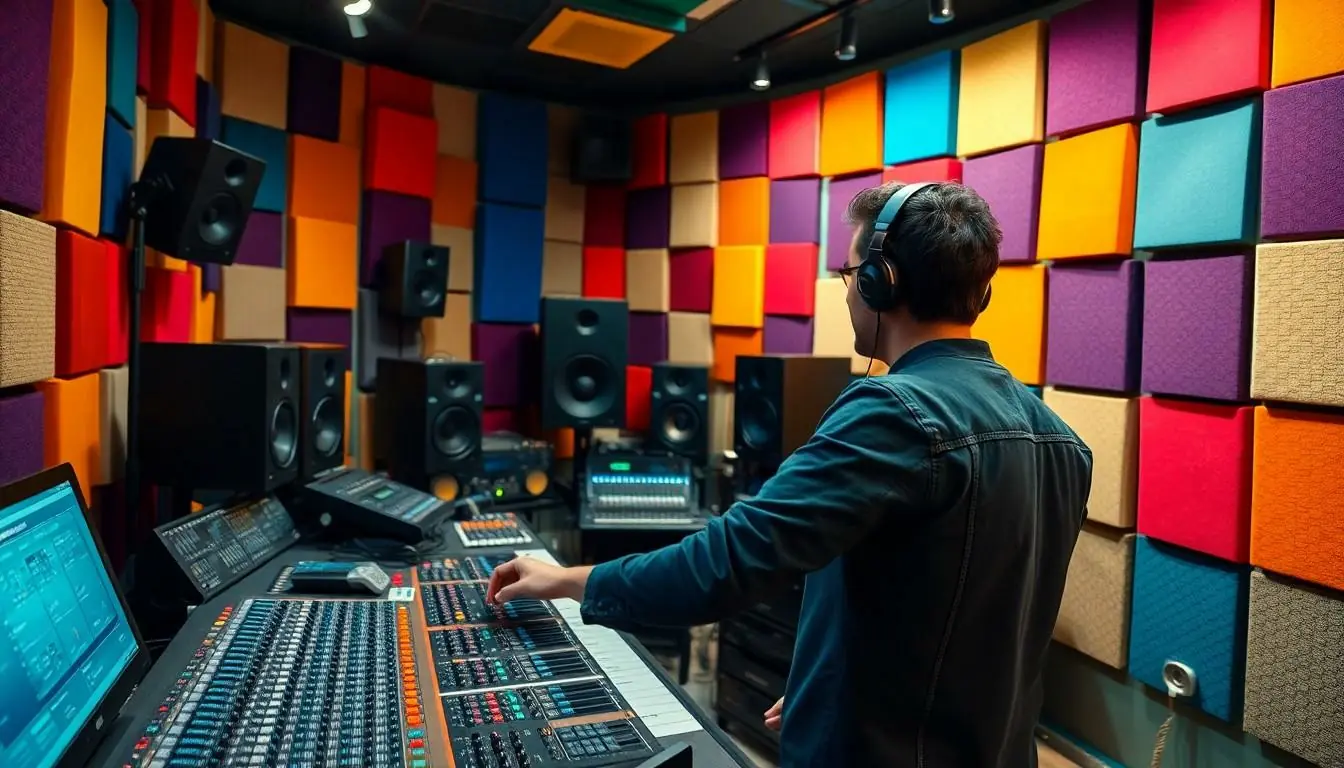Table of Contents
TogglePop music isn’t just a genre; it’s a phenomenon that has the power to make anyone feel like a rock star in their living room. With its catchy hooks and infectious beats, pop music has a way of sneaking into your head and refusing to leave—kind of like that one friend who overstays their welcome. But what really makes pop music “pop”?
Understanding Pop Music
Pop music embodies a blend of catchy melodies and relatable lyrics. This genre aims to reach broad audiences, often resonating with mainstream culture. Hooks play a crucial role; they’re memorable phrases that grab attention and encourage sing-alongs. These hooks contribute to pop music’s ability to make listeners feel connected and engaged.
Song structure in pop music often follows a predictable pattern. Many tracks feature verses, choruses, and bridges, creating familiarity that listeners appreciate. Familiar structures allow easy navigation through songs, increasing listener retention and satisfaction.
Production techniques also enhance pop music’s appeal. Layers of instrumentation, vocal harmonies, and polished production create an immersive listening experience. These elements can amplify emotional responses, drawing listeners into the song’s narrative.
Lyrics in pop music often focus on universal themes. Love, heartbreak, and celebration are common topics, transcending demographic boundaries. This relatability ensures that a wide range of listeners can connect with the songs on different levels.
Cultural influences shape pop music as well. Trends in social media and online platforms can drive popularity, introducing emerging artists and innovative sounds. Diverse genres and styles often intermingle, giving rise to unique fusions that refresh the pop landscape.
Ultimately, the essence of pop music lies in its ability to resonate widely, employ catchy hooks, and embrace contemporary cultural dynamics. Popular tracks encapsulate the spirit of the times, engaging listeners through elements that evoke joy and familiarity.
Key Characteristics of Pop Music

Pop music boasts several defining features that contribute to its widespread appeal. These characteristics shape the listening experience and draw audiences in.
Catchy Melodies
Catchy melodies serve as a fundamental element of pop music. They often incorporate simple, memorable hooks that linger in the listener’s mind. Melodies utilize repetition and variation to enhance recognition, allowing listeners to easily hum along. Successful pop songs frequently venture into upper registers, creating uplifting sensations. The combination of vibrant instrumentation and melodic simplicity ensures these tunes stay accessible. Artists like Taylor Swift and Dua Lipa exemplify this trend with their infectious hooks that resonate across demographics.
Relatable Lyrics
Relatable lyrics form another cornerstone of pop music. They typically explore universally relevant themes such as love, heartbreak, and personal growth. Lyrics often convey emotions that listeners experience in their lives, fostering a sense of connection. Many successful pop songs feature straightforward language that enhances accessibility and engagement. In addition, the use of storytelling in lyrics invites listeners to immerse themselves in the narrative. Artists like Ed Sheeran and Ariana Grande skillfully craft verses that resonate, adding to their popularity.
Production Quality
Production quality elevates pop music, showcasing advanced techniques that create polished sounds. Layered instrumentation often fills the sonic space, enriching the listening experience. Producers employ effects like reverb and vocal processing to heighten emotional impact. A focus on clarity and balance ensures every element shines through, captivating the audience. Moreover, the integration of modern technology allows for experimentation with new sounds. This attention to detail entices listeners, driving the overall success of pop tracks, as seen in productions by Max Martin and Rick Rubin.
Influences on Pop Music
Pop music reflects and adapts to various influences, shaping its sound and appeal. Cultural trends and technological advancements play significant roles in defining its evolution.
Cultural Trends
Cultural trends heavily influence pop music, allowing artists to connect with listeners. Fashion, societal movements, and lifestyle changes often manifest in song lyrics and visuals. Current events reflect in pop culture, making lyrics resonate with immediate realities. Artists who capture these fleeting moments typically achieve widespread recognition. Social media serves as a catalyst for trends, elevating songs that engage users through relatable themes, dance challenges, or viral moments.
Technological Advancements
Technological advancements significantly impact pop music production and distribution. Digital platforms facilitate access, allowing artists to share their music globally. Enhanced production tools create polished sounds, enabling artists to experiment with new styles. Streaming services guide listener preferences through algorithms, promoting songs that align with current trends. Innovative software also streamlines the collaboration process, connecting musicians across geographical boundaries, enabling fresh and diverse sounds.
The Role of Artists in Pop Music
Artists play a pivotal role in shaping pop music. Their unique styles and personalities influence trends and resonate with fans globally.
Iconic Figures
Iconic figures such as Michael Jackson and Madonna redefine pop music, setting standards through their innovative approaches. They create memorable hits that define eras, using visuals and performances to elevate their music. Artists like Taylor Swift also demonstrate versatility, transitioning between genres while maintaining a strong pop identity. Their ability to connect with audiences through relatable storytelling solidifies their legacies. Collaboration among artists amplifies creativity, resulting in chart-topping songs that resonate widely with listeners.
Emerging Talent
Emerging talent brings fresh sounds and perspectives to pop music, reshaping the landscape. Artists like Billie Eilish and Lil Nas X capture attention with their distinctive styles and originality. They often utilize social media platforms to build their fan bases and share their music. This accessibility creates opportunities for diverse voices to be heard. New artists frequently explore themes that reflect current societal issues, ensuring relevance and connection to their audiences. Streaming platforms also provide a launchpad for these talents, allowing for experimentation and broader reach in the music industry.
Pop music thrives on its ability to connect with listeners through catchy melodies and relatable themes. Its infectious nature invites everyone to join in the experience. The genre’s evolution reflects cultural shifts and technological advancements that shape its sound and accessibility.
Artists continue to push boundaries while staying true to the core elements that define pop. Their creativity resonates with diverse audiences, ensuring that pop music remains a vibrant and ever-changing landscape. Ultimately, pop music captures the essence of contemporary culture, making it a staple in the hearts of fans worldwide.





